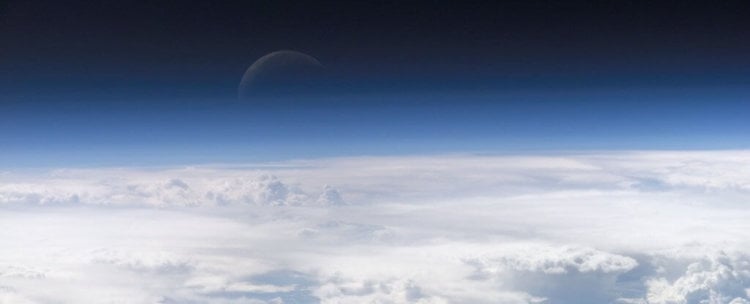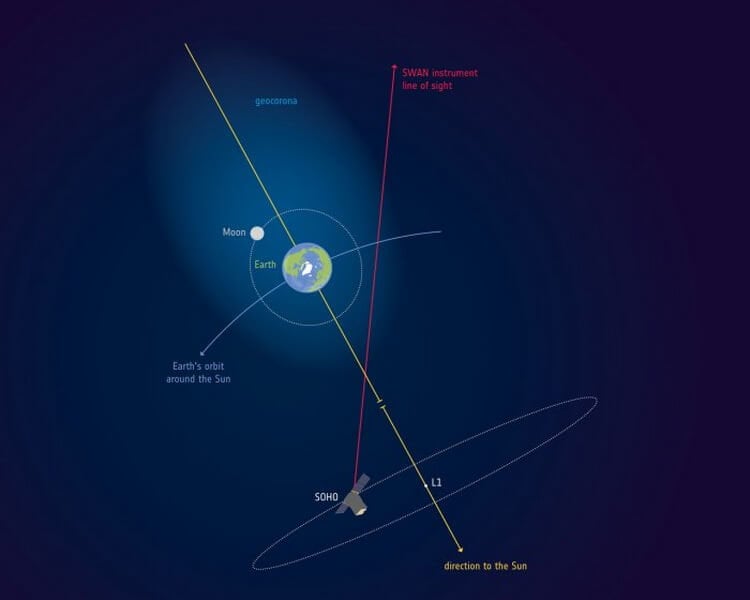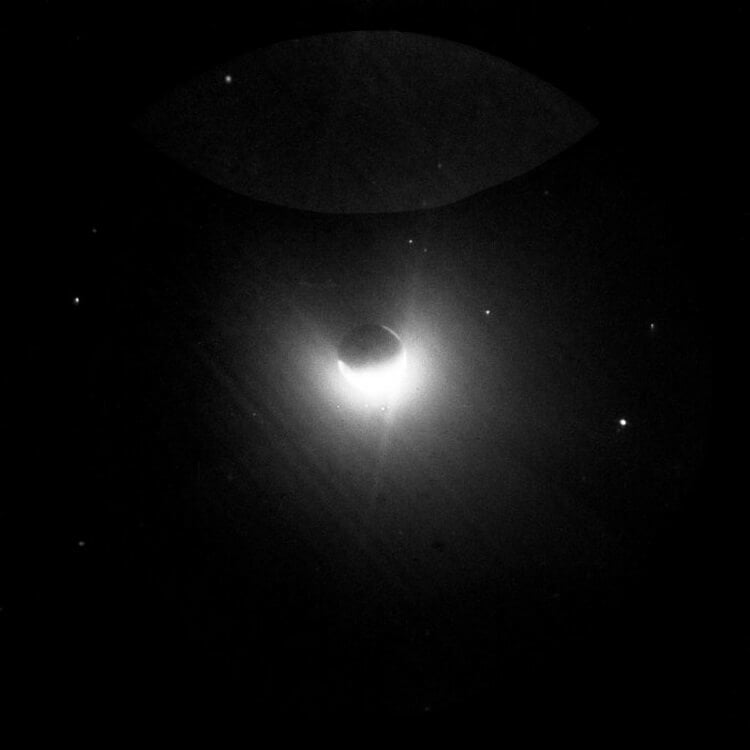The Earth’s atmosphere consists of several layers: the troposphere (upper limit 20 km), stratosphere (50 km), mesosphere (border 85 km), thermosphere (690 km border) and ectosphere (limit of 10 000 km). For a long time as the conventional boundaries between Earth’s atmosphere and space is so called the line of the Pocket, located at an altitude of 100 kilometers. However, in the new study, whose results were published in the Journal of Geophysical Research: Space Physics, it was found that the atmosphere of our planet is much more complicated than it might seem at first glance. Scientists have found that its boundaries go far beyond the moon.

Space encompassing including the moon and an outer part of the topmost layer of Earth’s atmosphere, ecosphere, the researchers called geocorona. It is a cloud of hydrogen atoms, which glow under exposure to ultraviolet radiation. Because this cloud is very discharged, measure the actual border was a daunting task. So, according to the results of previous studies, the upper limit of this space was determined by the distance of about 200,000 kilometers from Earth, a point where the pressure of the solar wind already covers the force of gravity of the Earth.
The international scientific team led by Igor Balakina from the space research Institute using data collected by the spacecraft SOHO (Solar and Heliospheric Observatory), a joint project of the European space Agency and us space Agency NASA was able to determine that the previously established boundaries of geocorona not even close matches to the real situation. The researchers found that the length of geocorona actually is at least 630, 000 kilometers. In other words, this means that the boundaries of our atmosphere are far beyond the moon, which is in turn removed from our planet only 384 000 kilometers.
“The moon is inside the earth’s atmosphere. This was not known until then, until an analysis was conducted of data gathered by the space Observatory SOHO,” — says the study’s lead author Igor Balykin from the space research Institute of RAS.

The blue color marked the boundary of geocorona of the Earth (not to scale)
Even more interesting, this discovery is the fact that it was done on the basis of observations carried out from 1996 to 1998 years, more than 20 years ago. All this time they were in the archive, waiting for analysis.
Data were obtained using a very sensitive instrument SWAN spacecraft, designed to measure the far ultraviolet radiation of hydrogen atoms, which are called photons of the line Lyman-alpha. To see them from Earth is impossible – they are consumed by the atmosphere, so observations should be carried out immediately in space. For example, the astronauts of mission “Apollo-16” has been able to photograph geocorona in 1972.
“At that time were on the lunar surface, the astronauts did not even suspect that in fact are inside geocorona,” says co-author of the new study and a former employee of the research program of the solar wind in the context of the SOHO mission, Jean-Loup Berto from the University of Versailles-Saint-Quentin-EN-Yvelines (France).

Geocorona picture of the Earth taken from the moon by the astronauts of mission “Apollo-16”
The advantage of the tool SWAN is that it is able to selectively carry out the measurement of radiation geocorona, filtering the radiation of the Lyman-alpha coming from deep space. This is what has allowed scientists to create a more accurate map of this part of the earth’s atmosphere.
The new study not only helped to understand the true size of geocorona, but also showed that the pressure of sunlight increases the density of the hydrogen atoms on the day side of the Earth and creates a region of high density on the night side. Nevertheless, even on the light side, this density is quite low – at an altitude of about 60,000 kilometers above the planet’s surface is about 70 hydrogen atoms per cubic centimeter. From the night side it is even lower and continues to decrease up to 0.2 atom per cubic centimeter closer to the lunar orbit.
“Usually we call it the vacuum. Therefore, the presence of such an additional source of emitting the ultraviolet light, hydrogen in this case can be able to facilitate the exploration of space,” — says Balykin.
The good news is, the authors explain the study that these particles will not create any additional threats to astronauts in future manned mission to the moon.
“In geocorona also there is ultraviolet radiation, since hydrogen atoms emit light in all directions, but its effect on the astronauts are in lunar orbit will be negligible in comparison with the primary radiation source is the Sun,” explains Jean-Loup Berto.
The bad news is that geocorona may interfere with future astronomical observations, which will be held next to the Moon.
“When using space telescopes working ultraviolet wavelength range to study the chemical composition of stars and galaxies, will have to take into account the factor of availability of geocorona of the Earth,” adds Berto.
The latter, we can mention one interesting fact. If these studies are correct, from a technical point of view, even in terms of space launches man never left the Earth’s atmosphere.
To discuss the opening of the scientists in our Telegram chat.